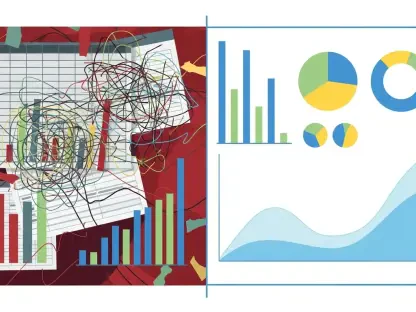Listen to the Article
Organizational shake-ups rarely fail for lack of effort, but rather for lack of cultural alignment. Restructuring plans get signed off, reporting lines redrawn, and operational targets recalibrated, yet the invisible foundations—trust, shared values, and a sense of purpose—remain fractured.
This has, and still does, result in slower execution, higher turnover, and diminished confidence long after the official “change” is declared complete.
This is not a theory. In a Gallup study, organizations undergoing major change without deliberate cultural rebuilding saw employee engagement drop by up to 21%.
Left unchecked, these cultural fractures deepen, creating a performance drag that no amount of operational fine-tuning can fully overcome. This article unpacks how organizational culture erodes during shake-ups, why traditional change management often misses the mark, and the framework for restoring alignment so that operational change translates into lasting performance gains.
How Structural Changes Turn Cultural Cracks into Fault Lines
The misalignment isn’t accidental—it’s built into the mechanics of major organizational change. Restructures, mergers, or leadership transitions often focus heavily on operational and financial targets while underestimating the pace and depth of cultural recalibration required.
In many cases, communication becomes transactional—focused on reporting outcomes and process updates rather than reinforcing purpose and values. Silos deepen as teams prioritize departmental stability over cross-functional collaboration. Decision-making slows as employees weigh whether new behaviors align with unclear expectations.
Research from McKinsey confirms that during organizational change, alignment on purpose and values is a leading predictor of sustained performance. Yet this alignment is often assumed rather than actively reinforced, leaving gaps that quietly widen.
These gaps rarely remain hidden for long. They begin to show up in attrition data, missed handoffs between teams, and inconsistent customer experiences. That’s why the path to cultural rebuilding starts with understanding what’s actually broken—and why.
Which leads directly to the first step: cultural diagnostics that go deeper than engagement scores.
Culture Defined
To draw a firm distinction: culture is not simply how engaged or satisfied employees feel. It is the collective set of behaviors, beliefs, and unwritten norms that shape how work gets done, especially when no one is watching.
Healthy cultures reinforce alignment between stated values and daily actions. In post-shake-up environments, however, these alignments often weaken. Leaders may communicate new strategies without articulating how decision-making authority, accountability, and collaboration should function in the new structure.
Modern culture diagnostics go beyond pulse surveys; instead, they use network analysis to reveal how information actually flows, sentiment analysis to uncover unspoken concerns, and behavioral data to identify mismatches between formal processes and informal norms.
Uncovering these informal behaviors is critical because if they remain unaddressed, they will dictate the lived culture regardless of what’s written in policy documents.
Once leaders can see where culture is misaligned, the next move is to build a bridge between strategy and daily behavior.
Culture as a Performance Multiplier
Culture is not just an HR talking point but a hard financial lever. High-trust, high-alignment cultures consistently outperform peers in revenue growth, profitability, and innovation metrics.
Harvard Business Review reports that strong, adaptive cultures drive higher long-term shareholder value than misaligned ones; in post-shake-up contexts, the speed at which cultural alignment is rebuilt can determine whether operational changes deliver the intended return on investment or not.
Consider three measurable returns:
Retention: Reducing voluntary turnover by even 5% in the first year post-shake-up can save millions in recruitment and onboarding costs, particularly for high-skill roles.
Productivity: Clear norms around collaboration and decision-making reduce duplication of work and speed up project delivery, cutting cycle times.
Customer Experience: Cultural alignment ensures front-line behaviors reflect brand promises, reducing churn and boosting net promoter scores.
However, even the most compelling case for cultural alignment falls short without a framework for action, which is why culture rebuilding must be treated as a strategic initiative.
How to Rebuild…
Knowing the “why” is important—but what about the “how”?
Rebuilding culture takes more than good intentions. It needs both structural strength and symbolic gestures that people can see and feel. Think of it as rebuilding muscle after an injury: you need the right exercises, done consistently, to restore full strength.
Step 1. Diagnose Cultural Friction Points. Combine quantitative metrics (engagement, retention, collaboration patterns) with qualitative insights (focus groups, leadership interviews) to map where friction is highest. Look for “shadow processes” that indicate misalignment between the formal org chart and informal workflows.
Step 2. Define the Non-Negotiables. Identify 3–5 core behaviors that must be consistent across the organization, regardless of function or geography. These should directly support the post-shake-up strategy—e.g., “decisions are made closest to the customer” or “cross-functional issues are resolved within 48 hours.”
Step 3. Reset Leadership Modelling. Employees will mirror what leaders do, not just what they say. Equip leaders with specific behaviors, language, and decision-making frameworks that reinforce the desired culture. Make these visible in all-hands meetings, performance reviews, and informal interactions.
Step 4. Rebuild Cross-Functional Connectivity. Create formal mechanisms—like joint planning sessions, cross-team projects, and rotational roles—that encourage relationship-building beyond silos. Use collaboration analytics to track whether connections are deepening over time.
Step 5. Align Systems and Incentives. Performance metrics, recognition programs, and promotion criteria must reinforce the desired behaviors. For instance, if collaboration is a priority, measure and reward contributions to shared objectives, not just individual targets.
Step 6. Create Early Wins and Visible Proof Points. Highlight and celebrate examples of the new culture in action. This reinforces the belief that change is real and achievable.
These steps work best when integrated. But even with strong execution, cultural rebuilding requires embedding it into the organization’s operational rhythm.
Embedding Culture as a Strategic Differentiator
Culture that’s rebuilt and reinforced post-shake-up becomes more than internal hygiene—it becomes a competitive advantage.
Organizations that emerge strongest from disruption often share one trait: they make cultural alignment a standing agenda item at the executive level, tracking it with the same discipline as financial performance. They measure network strength, decision-making speed, and values adherence alongside quarterly KPIs.
This ongoing attention sends a clear message: culture is not a “soft” factor—it’s a measurable, manageable driver of business results.
Which brings this chat to the final reality: culture isn’t rebuilt once, it’s continuously reinforced.
Make Culture Your Post-Change Power Play
Like employees insisting “everything’s fine” while disengagement rises, leaders often assume culture will stabilize on its own after change. In reality, cultural misalignment compounds over time if left unchecked.
The cost is visible in attrition rates, missed growth targets, and market opportunities lost to more agile competitors. But the payoff of proactive rebuilding is equally tangible. Tools, analytics, and leadership practices now exist to close the gap.
Be the leader who treats culture as a commercial control, and see those organizational shake-ups convert into long-term competitive strength.









